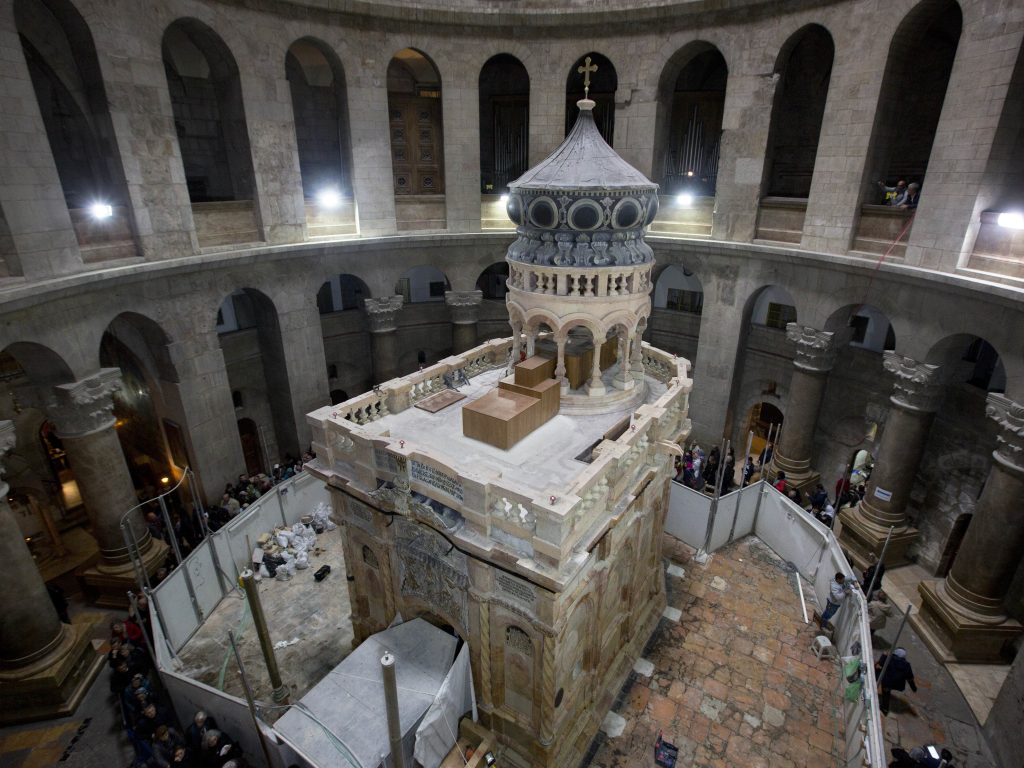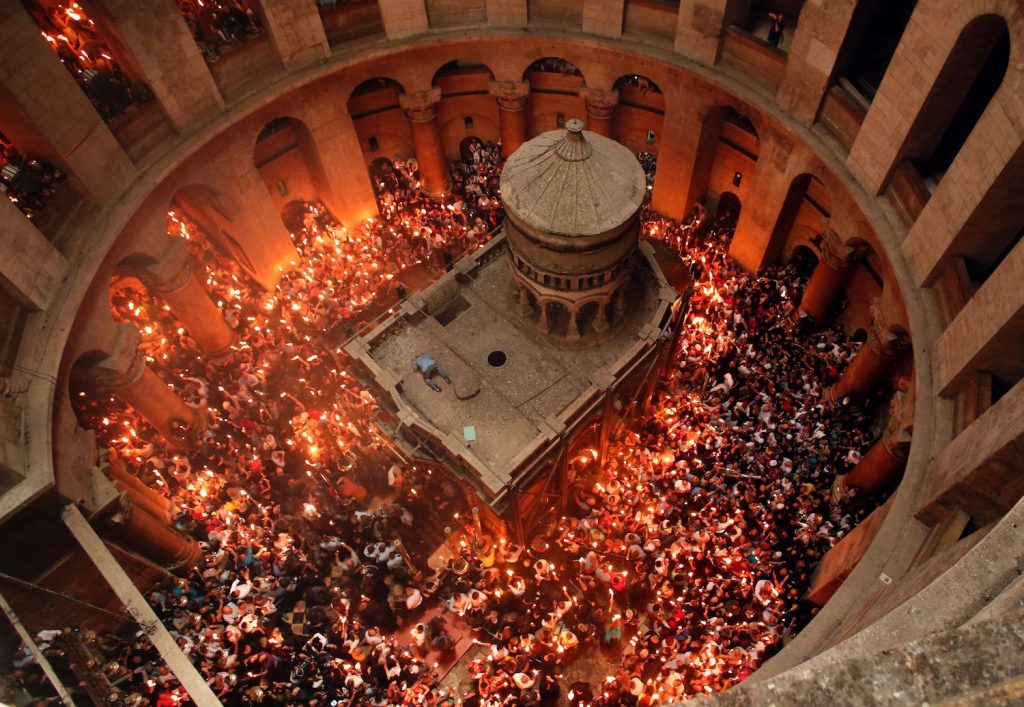The Historic Restoration of the Tomb of Jesus in Jerusalem: A Landmark Renovation
The restoration of the Tomb of Jesus in Jerusalem’s Church of the Holy Sepulchre marks a historic milestone for one of Christianity’s holiest sites. The ornate shrine, known as the Edicule, is believed to house the tomb where Jesus’ body was entombed and resurrected according to Roman Catholic and Orthodox Christian tradition. After years of neglect, a Greek restoration team led a $4 million project to clean, reinforce, and revitalize the structure. In this article, we will delve into the details of this remarkable renovation, highlighting the significance of the Edicule and the challenges faced during the restoration process.

The Church of the Holy Sepulchre: A Sacred Site
The Church of the Holy Sepulchre, located in Jerusalem’s Old City, is one of the world’s oldest churches. Built in the 12th century on fourth-century remains, it holds immense religious significance for Christians around the globe. According to tradition, the church is believed to encompass the sites of Jesus’ crucifixion, burial, and resurrection. The Edicule, situated at the heart of the church, is the focal point of the restoration project.
The Edicule: A Shrine of Historical and Spiritual Importance

The Edicule is a shrine constructed around the original cave where Jesus’ body was laid to rest. Visitors can kneel before a marble niche that covers the bench where it is believed Jesus’ body was placed. Over time, the shrine had fallen into disrepair, with its stone walls buckling outward due to factors such as water damage, humidity, and candle smoke. The urgent need for restoration became evident, as the structure faced the risk of collapse.
A Collaborative Restoration Effort
The restoration of the Edicule was made possible through a collaborative effort involving various stakeholders. The World Monuments Fund, a nonprofit organization based in New York, played a crucial role in raising funds for the $4 million project. Additionally, King Abdullah of Jordan and Palestinian President Mahmoud Abbas each donated around $165,000. These contributions demonstrated the shared commitment to preserving this cherished religious site.
The Restoration Process: Preserving History
The restoration process commenced in May, when a Greek restoration team from Athens began meticulously dismantling and reassembling parts of the Edicule. The team removed stone slabs from the walls and painstakingly scrubbed away decades of black candle soot and pigeon droppings. To strengthen the building’s core, titanium mesh and grout were inserted after removing the stone slabs of the facade. One of the most significant changes was the removal of a towering iron cage that had encased the shrine since 1947.
Unveiling the Inner Sanctum: A Momentous Discovery

One of the restoration project’s most awe-inspiring moments occurred in late October, as the team entered the inner sanctum of the Edicule. Layer by layer, they unveiled the rock-hewn bench where Jesus’ body was believed to have been placed after his crucifixion. The exposed bench, remarkably intact and flat, provided an unparalleled glimpse into history. It was the first time this significant artifact had been documented in its current state.
Layers of History: Tracing the Origins
The layers covering the rock-hewn bench told a captivating story of the Edicule’s origins. The restoration team discovered a layer from the late-Crusader era, dating back to the 14th century. Underneath that layer, they unearthed an even earlier one from the fourth century, when Emperor Constantine initially constructed the original church. These layers of history added to the profound significance of the Edicule and its connection to Jesus’ final resting place.
Honoring Tradition: Revitalizing the Edicule
While the marble layers were carefully restored and returned to their original positions, one notable change was made to the shrine’s inner sanctum. A small window was incorporated into one of the walls, offering visitors a glimpse of the original rock wall believed to be Jesus’ tomb. This addition enhanced the overall experience, allowing pilgrims to connect more deeply with the sacredness of the site.
Conclusion: A Testament to Preservation and Faith

The restoration of the Tomb of Jesus in Jerusalem’s Church of the Holy Sepulchre is a testament to the power of preservation and faith. This historic renovation ensures that future generations will continue to have the opportunity to witness and experience the profound significance of this sacred site. The collaborative efforts, meticulous restoration process, and momentous discoveries have revitalized the Edicule, preserving its rich history for years to come. As pilgrims from around the world visit this holy place, they can now do so with a renewed sense of awe and reverence.




